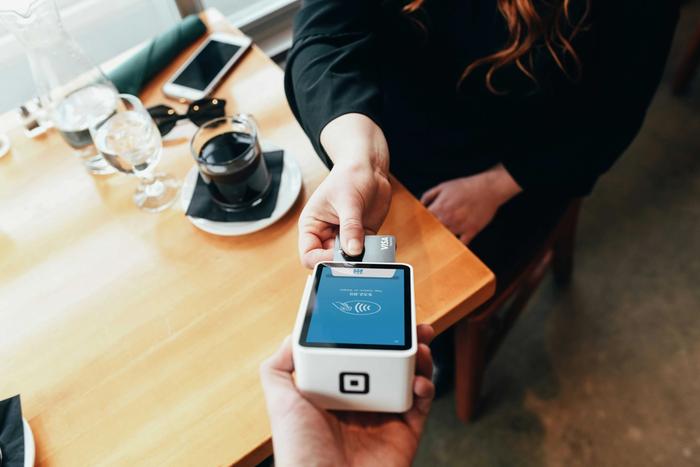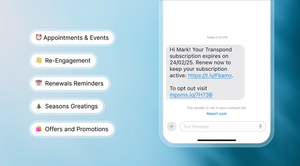Customer retention is a pressing challenge to businesses across various sectors, with significant churn rates impacting both traditional and online retailers. Losing customers not only impacts business continuity but also intensifies acquisition costs, as acquiring new customers is generally more expensive than retaining existing ones.
Understanding the signs of potential customer departure is crucial, and there are proactive measures you can implement to maintain customer engagement. This article will cover strategies to identify early signs of customer churn, using key sales analytics to predict its occurrence and intervene effectively to retain at-risk customers before losing them becomes inevitable.
What is customer churn?
Customer attrition, commonly referred to as customer churn, occurs when an individual decides to discontinue using a company's products or services, effectively ending their customer lifetime relationship with the business.
The rate of customer churn is calculated by the percentage of customers who leave within a specific timeframe, such as annually, monthly, or quarterly. This metric is essential for businesses to understand the extent of customer loss over time.
How to calculate customer churn
You can calculate customer churn rate using the following formula:
Lost customers / Total customers x 100 = Churn rate (%)
Applying a churn rate formula allows you to standardize your data for consistent monitoring over time - it’s an easy way to track customer feedback and measure customer health in general. You can quantify your churn rate in monetary terms. This approach helps you assess the financial impact of customer attrition, providing a clear picture of revenue losses tied to customer churn.
Should I calculate my churn rate monthly, quarterly, or annually?
When deciding how often to calculate churn rate, it comes down to understanding the typical buying habits associated with your products or services. Take the example of opticians—customers might not need new glasses very often, maybe only replacing them every few years. This isn't a sign of customer disinterest, but just the nature of the product.
For businesses where transactions occur more frequently, such as a coffee shop where many customers might stop by several times a week, it might make more sense to monitor churn on a monthly or even weekly basis.
It’s crucial to tailor your customer churn calculations to fit these patterns. Choosing the right interval—be it monthly, quarterly, or annually—helps ensure that you're not misinterpreting customer behaviors as churn when they're simply normal buying cycles for your industry. This approach prevents unnecessary panic and misdirected customer re-engagement efforts, giving you a clearer picture of your customer retention landscape.

Understanding customer churn
Tracking customer churn over time will offer valuable insight into when you lose customers and why. You might also quantify churn in financial terms for clearer impact analysis. When defining churn, you should also consider the purchase frequency typical to your industry.
For example, industries like eyewear or home furnishings often see extended intervals between purchases, which isn't necessarily an indicator of disengagement or risk of churn.
Adjust your definition of churn to align with the expected purchasing patterns of your products or services, to avoid unnecessary re-engagement initiatives with customers who are not actually at risk.
Is customer churn always bad?
Customer churn is inevitable to an extent. It's unrealistic to expect that every customer who initially supports your business will keep coming back indefinitely, especially if the service or product you offer is a long-term or one-time purchase.
However, a high or increasing churn rate over any time period is cause for concern and suggests you need to implement strategies to enhance customer retention.
What makes customer churn a problem?
It’s important to take action if you notice your customer churn rate picking up. Fail to do something about it and you could find yourself with further problems to deal with in the future.
Customer churn may affect brand reputation
Customer churn isn't just about numbers; it's a narrative that can significantly impact your customer lifetime value and your brand's reputation. Think about it: when customers dip out because they're dissatisfied, they don't just go quietly. They might spread the word, share their bad experiences, and leave reviews that can deter potential new customers. The more this happens, the more you’ll likely find yourself scrambling to improve sales conversion rates.
That's why it's crucial to keep tabs on the pulse of your customer base. If you notice signs that someone might be on their way out, don't hesitate to reach out. A simple conversation might not only salvage a wavering customer relationship but could also turn them into advocates if they feel their concerns are valued and addressed. It’s all about turning potential negatives into positives and showing your customers they really matter.
Your high customer churn rate is beneficial for your competitors
Each customer you lose through customer churn is a customer a competitor gains. The best way to prevent this is to make sure that you’re offering something your competitors aren’t, whether this is very competitive pricing or above and beyond with your customer service. Otherwise, a period of elevated customer churn for you could be a profitable period of customer acquisition for your competitors.
Customer churn could limit your company’s growth
Growing your business means growing and maintaining your customer base. If your customer churn rate is on the rise, it could stop you from making progressive decisions to grow your business.
Not only will it feel riskier to make major investments during an uptick in customer churn, but you could certainly benefit from a captive audience if you’re looking to launch new products or services.
What causes customer churn?
There are a few different reasons why you might start to see an increase in customer churn. Understanding why customer churn is happening will make it easier to improve the situation and prevent customer churn in the long run.
1. There’s no incentive for customers to return
One of the most effective ways to increase customer retention is to make sure your customers have a good reason to keep coming back. If customers feel loyalty is rewarded, they’re much more likely to return to your business whenever they need the product or service you offer.
If you don’t reward customer loyalty, there’s nothing to stop them from going elsewhere - especially if your competitors offer better pricing.
2. You operate in a seasonal market
If you operate in a seasonal market, you’ll find that your customer churn rate is consistently high. For example, if you operate a holiday park, you’ll find that you see an influx of customers during the warmer months, with a high churn rate towards the end of the year.
You can counteract this high customer churn rate by finding a way to extend your offering or adapt your business model so you can operate successfully year-round.
3. You can’t keep up with the competition
If you want to keep up with your competitors, you’ll need to regularly assess and refine your offerings, taking careful notice of competitors’ strategies. Innovation and regular updates to your products and services are essential. You’ll need to be prepared to introduce new features and functionalities that address customers’ needs and desires.
4. You need to look at your pricing
You should regularly look at your pricing to check it’s in line with market expectations and with your competitor's pricing strategies. Above all else, customers will be on the lookout for good value - if you’re not offering value for money, chances are that they’ll head elsewhere.

5. You’re not attentive enough to your customer base
One of the best ways to nurture customer loyalty is to make sure you’re listening to your audience.
By asking for feedback and letting your customers know that their opinions matter to you, you’ll get a better understanding of what you can do to improve your offerings. You’ll also leave customers feeling as though your brand is more trustworthy and cares about what they think.
6. Your customer service needs work
Sometimes it’s as simple as customers feeling like your customer service just isn’t quite up to scratch. If the customer service you provide isn’t up to scratch, whether you aren’t attentive enough or aren’t able to help the customers as much as they need you to, you could see an increase in your customer churn rate.
Predicting customer churn with customer churn analysis
Prevention is better than the cure. Customer churn doesn’t generally come out of nowhere - there are often early signs that a customer is about to end their relationship with your business. Customer churn analysis is the technique of using customer churn data to inform your next steps, spotting and acting on the early indicators of customer churn.
If you’re practicing customer churn analysis correctly, you should see your customer churn rate drop. There are some key types of customer churn analysis that can be used to inform your responses to signs of customer churn.
Conversation analytics
Conversation analytics use AI technology to dig deeper into your digital correspondence with customers, looking at the intent, emotion, sentiment, and effort on both sides of the conversation.
Using this information correctly, you can often highlight the indirect ways that customers indicate they’re going to stop using your products or services.
Operational insights
Using operational insights, you can look closely at the journey of the average customer and identify flaws that might affect your customer experience, such as cumbersome checkout processes or inefficient customer service.
Every time a customer experiences difficulties shopping with you, they become more likely to churn.
Customer satisfaction surveys
Customer satisfaction surveys are like a roadmap leading you straight to the heart of your customer experience. They give you a peek into what makes your customers tick, what delights them, and what turns them off.
By diving into this feedback, you get a backstage pass to the entire customer journey, helping you pinpoint areas where you're hitting the mark and areas that need a little love. Crafting these surveys is an art in itself - you want to ask the right questions to get the most insightful answers.
After all, the more you know about your customers' experiences, the better equipped you are to keep them happy and coming back for more.

Preventing customer churn with competition analysis
By looking closely at the customer experience offered by your business compared to your competitors, you’ll be able to identify areas of your business that may be causing customer churn. Areas to analyze include:
- Pricing
- Quality of customer support
- Sales tactics
- Loyalty schemes
- Special offers for new and existing customers
- Customer engagement
- Overall quality of product or service
- Brand exposure
- Marketing strategies
How to reduce customer churn and increase customer retention
Reducing customer churn means doing everything you can to retain existing customers. By providing the best possible experience for your customers, chances are you’ll start to see less customer churn and keep your customers coming back to you. There are various steps you can take to predict customer churn and improve your customer retention rate.
Improve your marketing strategies
Improving your marketing strategies isn't just about casting a wide net to catch new customers; it's also about nurturing the ones you've already won over. Think about it like a garden—you wouldn't just plant new flowers but ignore the ones that are already blooming.
Make your marketing messages resonate with the customers who have already bought into what you're selling. Show them some love with exclusive deals, sneak peeks, and personal touches that remind them why they chose to do business with you in the first place.
This way, you keep your existing customers feeling valued and visible, while also attracting new ones. It’s about balancing the scale between courting new prospects while still showing plenty of attention to existing customers.
Provide ongoing value
Make sure you’re providing customers with useful information and support that can help them to get the most out of your products or services. For example, offer instructions, tutorials, and recipes - consider what types of relevant content can be used to support existing customers or enhance their enjoyment of your products and services.

Reward customer loyalty
If you don’t have a customer loyalty scheme in place, this is a great opportunity to incentivize customers to keep returning to your business. Consider introducing loyalty schemes that reward returning customers with discounts, free items, or other exclusive perks.
Upgrade your CRM software
Effective customer relationship management (CRM) is crucial for businesses looking to avoid customer churn. By choosing the right CRM software for your business, you’ll be equipped with tools and resources to help you better connect with your customers, supporting positive experiences and reducing the likelihood of customer churn.
Boost your customer relationship management with Capsule CRM software
Effective customer relationship management is key for reducing customer churn and boosting customer retention. With Capsule CRM, you’ll access a range of high-quality tools designed to make for better customer communications, from contact management, to email marketing tools to sales analytics.
With all these tools at your disposal, you can nurture better relationships with your customers, access key insights about your average customer’s experience, and identify areas for key improvement, reducing the risk of customer churn. Try it free today and explore the many benefits of Capsule CRM.
Frequently Asked Questions
Two common types of customer churn are passive and active customer churn.
Passive customer churn happens when a fault prevents a customer from completing a purchase, whether that be unresponsive or insufficient funds. Active churn happens when a customer consciously decides not to purchase a product or service from your business, which may be down to them being dissatisfied with your service or deciding to purchase with a competitor instead.
Knowing which type of customer churn you’re experiencing is important when working out how to improve your customer churn rate and number of customers.
If you’re a business owner, you should always take the most responsibility for preventing customer churn, given that you have access to all the data needed to predict it. However, all your employees can help to prevent customer churn by looking out for signs of customer churn and suggesting areas for improvement.
All businesses will deal with customer churn to an extent - customer turnover is an inevitability. However, problems arise when your customer churn rate is high and you’ve no new customers replacing those you’ve lost.
To maintain your business, your customer churn and customer acquisition rates need to be carefully balanced. The most successful businesses keep churn rates and customer acquisition costs low and rates high.
Losing customers or customer churn is considered a key performance indicator (KPI) in many industries, especially those involving subscriptions or ongoing customer relationships like telecommunications, software as a service (SaaS), or any service-based business.
By monitoring churn and the number of customers, companies gain valuable insights into customer loyalty and the effectiveness of their retention strategies.
Customers who’ve churned from your business might have done so because they were unhappy with your product or service - and this can get around. If a churned customer spreads negative feedback, either through reviews or word of mouth, it could lead to more churned customers and disastrous consequences for your business.
By keeping customers happy, you can prevent customer churn and maintain a good reputation.




